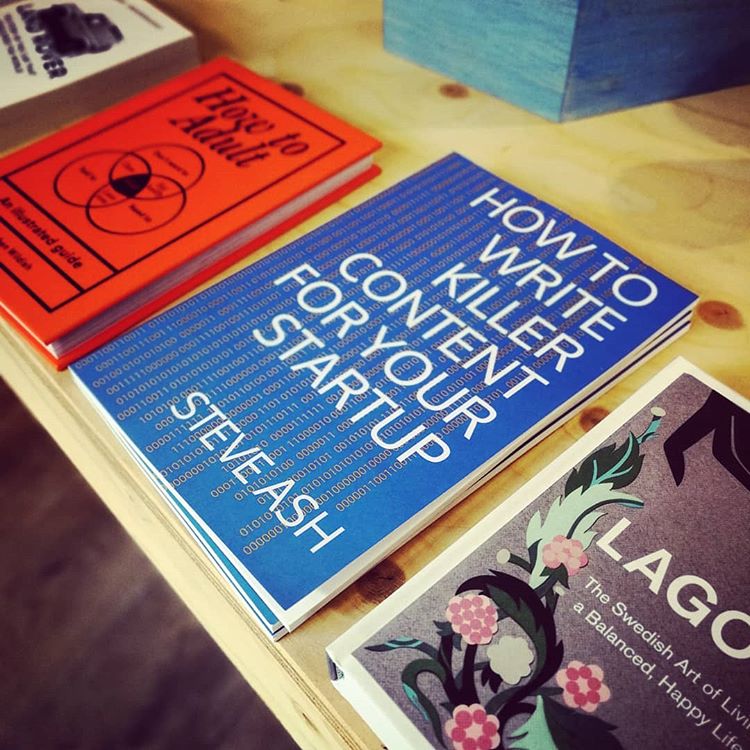Once a potential customer has clicked through to your blog page, you obviously want them to read your content. Part of winning this battle is to tell a great story, or to share an insight that makes people stop in their tracks and pay attention. But a BIG part of getting people to read your content is to make the text as readable as possible.
There’s no special magic to this. We’re ALL writers – we write content regularly every day, whether it’s emails, texts, Facebook updates or shopping lists. So, don’t think of writing as something scary. It isn’t!
But there are some tricks for drawing your reader’s eye into the content, keeping them reading, scrolling and (hopefully) clicking through from your call-to-action (CTA).
Forget what you learned at school
Many of the writing methods, grammar rules and traditional language you learned at school don’t work well in the context of modern content writing.
You need to get your spelling right, naturally. And it’s important to know the right places to put a full stop or a comma. But beyond that, if it sounds right and makes sense, then feel free to go freestyle and mix up your style.
So, for example, despite what your English teacher may have said, you CAN start a sentence with ‘And’ and ‘But’. Take a look at any broadsheet newspaper, business website or well-written novel and you’ll find examples of starting a sentence with a conjunction (that’s a ‘joining word’).
There are no hard and fast ‘rules’ of writing, so throw your preconceptions out of the window and just let the words flow. When it comes to writing your content, it’s important to not feel constrained by a set of grammar guidelines. This isn’t an exam, remember, it’s about expressing your enthusiasm and energy for your product.

Start with your key message
In most online and digital content, it’s vital to get your important message across quickly. So always start by putting your key message in the opening paragraph.
Tell people what you’re going to tell them, get your hook into your reader and give the Google spiders something to search for, with keywords, hashtags and search terms.
Keep it simple, stupid!
Short, simple, concise content is what works best.
Being long-winded, wordy and using archaic language impresses no-one and definitely won’t help your content find an audience.
What’s important, is getting your message across clearly. And the best way to do this is usually in the most straightforward terms. That doesn’t mean dumbing down or removing personality and individuality from your writing. It means understanding your topic, highlighting the most important elements and explaining them clearly. Makes sense really, doesn’t it?
So, the key to good writing is a simple one:
Keep It Simple, Stupid (making a handy acronym – KISS).
- Focus on your message and make it clear
- Don’t use 50 words when 10 will do the job
- Get your idea across without using jargon
- Throw away anything that doesn’t help your message

Aim for maximum readability
We engage with online content best when it’s ‘chunked up’ into small bite-size sections.
This may be a sign of our overuse of social media, but most people are unwilling to commit too much time for reading long, cumbersome and meandering content. Remember, you’re not writing War & Peace here. You want to make the words you write as readable as possible and there are a few tricks that will help you do this.
For maximum readability:
- Keep sentences short – be concise and don’t write long, wandering sentences. Make the full stop your friend and only make each sentence as long as it needs to be. But also mix up sentence lengths. To create variety (like this).
- Use plenty of breaks – break up long paragraphs with spaces, so the text doesn’t look so daunting to the reader and has room to breathe. And pull out key messages and sentences so they stand out from the main body text.
- Include sub-headings to create clear sections – use a subheading to introduce a new idea or a new theme in the content. This helps readers to scan down the margin and see what your blog/email/article is about.
- Use bullet points wisely – if you’re creating a list of ideas or giving a detailed explanation of how to do something, use bullet points to introduce each new item or point (like I’ve done here).
Contractions and slang are fine
If you’re aiming for a more informal, chatty brand persona, it’s fine to use some colloquial slang and to shorten words into contractions (things like ‘don’t’ instead of ‘do not’ and ‘you’re’ instead of ‘you are’).
Using contractions and everyday slang makes your content easier to read and helps you to connect more directly with your audience.
If you’re aiming to create an open and friendly brand persona, sounding human and approachable is key to this – and writing as you speak is an effective way to create more humanity in your content.

Put yourself in your customers’ shoes
To write content that your reader finds interesting, you need to think like your customer. Think about their challenges, their pain points or their specific needs as consumers/customers – and write from their perspective.
Writing in the second person helps: e.g. ‘When you’re looking for the best CRM system for your business…’ rather than ‘When business owners are looking for the best CRM system for their business’. Make this about MY needs, not YOUR company’s offerings.
By directing your content directly at me (the reader and your potential customer), it shows that you understand my customer needs. And this is great for increasing confidence in your brand, positioning your product/services in the busy marketplace and turning your customers into long-term advocates for your brand and company.
Let the music in your writing sing through
Good content writing is about balancing clear, simple language with the descriptive or technical language needed to sell your business vision to customers.
If you can get that balance right, you’ll hear those words sing. Don’t get too bogged down in the technicalities of grammar – just write as you speak. Be natural and the words will flow.
Keep the KISS acronym in mind when you first sit down to write some content. Read it through and ask yourself ‘Am I really making this as simple and effective as I can?’. If not, then it may be time to keep it simple, stupid!

How To Write Killer Content For Your Startup
This blog post was originally published as a chapter in my book, ‘How To Write Killer Content For Your Startup’. If you’re starting out as a startup founder, or want to spice up your business writing skills, this is the 101 guide for you.
Find out how to write, plan and improve your business content, broken down across ten easy-to-read chapters:
- Define Your Vision – Missions and manifestos
- Know Your Audience – Customers and targets
- Create Your Brand – Personality, style and tone
- Improve Your Writing – Readability and grammar
- Build A Website – Content and messaging
- Have A Content Plan – Planning and Timelines
- Get Blogging – Telling Stories
- Start Getting Social – Tweeting and sharing
- Run A Campaign – Email, newsletters and ads
- Analyse Performance – Engagement and analytics
Do your startup a favour and see how great content marketing can help your journey.